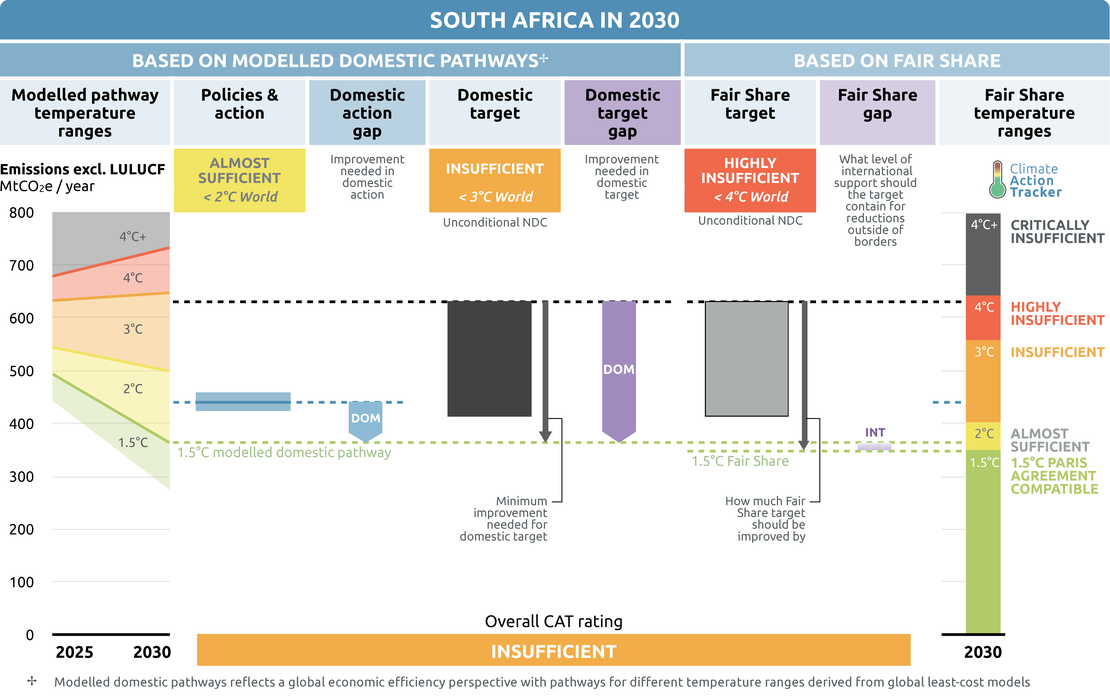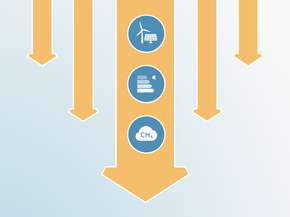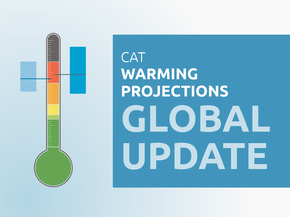Targets
Paris Agreement targets
NDC description
South Africa’s NDC, 2020 pledge and long-term target are consistent with its long-term goal to constrain its emissions to follow a peak-plateau-decline (PPD) trajectory. Based on this, South Africa’s emissions should peak between 2020 and 2025 as reflected in the National Climate Change Response Policy, and submitted in the country’s NDC, plateau for approximately a decade between 2025 and 2035 and then decline in absolute terms.
South Africa’s NDC targets an absolute emissions level in the range of 398–614 MtCO2e incl. LULUCF over the period 2025–2030 (Government of South Africa, 2016). Assuming LULUCF remains at the average level over 2000–2012 (-17 MtCO2e), this NDC translates to an emissions level of between 415–631 MtCO2e excluding LULUCF, equivalent to a 17–78% increase above 1990 levels excluding LULUCF. The NDC document does not specifically mention whether the emissions range is an unconditional target, but the CAT interprets it as such.
South Africa’s NDC is “premised on the adoption of a comprehensive, ambitious, fair, effective and binding multilateral rules-based agreement under the UNFCCC at the 21st conference of the Parties (COP21)” (Government of South Africa, 2016). It also highlights that equity, economic and social development and poverty eradication are South Africa’s top priorities.
In September 2019, President Ramaphosa announced the government would finalise a ‘Just Transition Plan’, “including defining a vision compatible with the 1.5 degree Paris temperature goal (Ramaphosa, 2019).
The CAT rates South Africa's target as "Insufficient" when rated against modelled domestic pathways ("domestic target"), and "Highly insufficient" when rated against the fair share contribution ("fair share target"). South Africa does not specify a conditional target or an international element in its NDC, so we rate the unconditional target against the two rating frameworks.
We rate the proposed 2030 reduction target levels as “Insufficient” when compared to modelled emissions pathways. The “Insufficient” rating indicates that South Africa’s domestic target in 2030 needs substantial improvements to be consistent with the Paris Agreement’s 1.5°C temperature limit. If all countries were to follow South Africa’s approach, warming would reach over 2°C and up to 3°C.
Our methods do not provide a clear answer for the need for finance for South Africa. On balance, the CAT methodology shows that provision of a small but important amount of international support is consistent with the wide range of literature on fair share contributions to meeting the Paris Agreement's goals. However, South Africa currently relies on foreign investments and international finance support to implement a large percentage of its climate change programmes, and government also emphasises in its NDC, that the implementation of its NDC will be enabled by financial support as specified in the Paris Agreement.
The starting year for the modelled domestic pathways is 2015. The modelled domestic emissions pathways are based on regional scenarios and emissions in South Africa, as opposed to the region on average, are already stabilising. Because of this, the modelled domestic pathways deviate from the historical data and are higher in 2020.
We rate South Africa’s 2030 NDC target as “Highly insufficient” when compared with its fair-share contribution to climate action. The “Highly insufficient” rating indicates that fair share target in 2030 leads to rising, rather than falling, emissions and is not at all consistent with the Paris Agreement’s 1.5°C temperature limit. If all countries were to follow South Africa’s approach, warming could reach over 3°C and up to 4°C.
CAT interprets the full NDC target as unconditional. As South Africa only needs to reach its upper end of the target range to fulfil the NDC, we rate that emissions level. If South Africa committed to meeting the lower end of its target range, the rating would change to “Almost sufficient” when compared to modelled domestic pathways, and to “Insufficient”, but close to the border to “Almost sufficient”, when compared to the fair share contribution.
Further information on how the CAT rates countries (against modelled pathways and fair share) can be found here.
Last NDC update
South Africa published a draft of its updated NDC in March 2021, which would strengthen the country’s target range for 2030: the upper end is now 28% lower than in the previous NDC, the lower end is unchanged. The draft NDC had been open for public consultation until the end of April 2021.
While the draft version increases South Africa’s climate ambition towards 2030 and increases clarity, transparency and understanding, the target range is not yet likely to be in line with the Paris Agreement 1.5˚C temperature goal. The CAT will provide an updated assessment once South Africa submits a final version of the updated NDC to the UNFCCC.
Under the CAT current policy projections, considering the potential impact of the ongoing COVID-19 pandemic, we estimate South Africa’s emissions are likely to fall within the updated target range by 2030. This decrease in emissions could be further strengthened and sustained if the government were to implement more stringent climate policies and a ‘green’ economic recovery and shift away from the carbon-intensive investments set out in some of its COVID-19 recovery plans.

Net zero and other long-term target(s)
As part of the peak-plateau-decline (PPD) trajectory, South Africa aims to reduce GHG emissions to 212–428 MtCO2e by 2050 (including LULUCF) (Department of Environmental Affairs, 2018; Government of South Africa, 2010). Excluding LULUCF, this long-term target is equivalent to 229–445 MtCO2e, according to CAT calculations (details see assumptions section).
South Africa also states its intention to commit to a net zero CO2 target (“net zero carbon emissions”) by 2050 as part of a visionary statement in its LTS (Republic of South Africa, 2020). In this context, the National Planning Commission is in the process of developing a common vision for South Africa in 2050 and will subsequently update its Low-Emission Development Strategy.
For our full South Africa net zero analysis click here.
2020 pledge
Under the Copenhagen Accord, South Africa committed to reduce emissions below BAU by 34% in 2020, and by 42% in 2025, incl. LULUCF (Government of South Africa, 2010). The emissions level (excluding LULUCF) derived from South Africa’s pledge is 415–600 MtCO2e in 2020 and 415–631 MtCO2e by 2025. This is in line with the Peak-Plateau-Decline pathway of 398 to 583 MtCO2e in 2030 incl. LULUCF. South Africa’s Copenhagen pledge is conditional on a fair, ambitious and effective agreement in the international climate change negotiations under the UNFCCC and the Kyoto Protocol and the provision of support from the international community.
Further analysis
Latest publications
Stay informed
Subscribe to our newsletter





